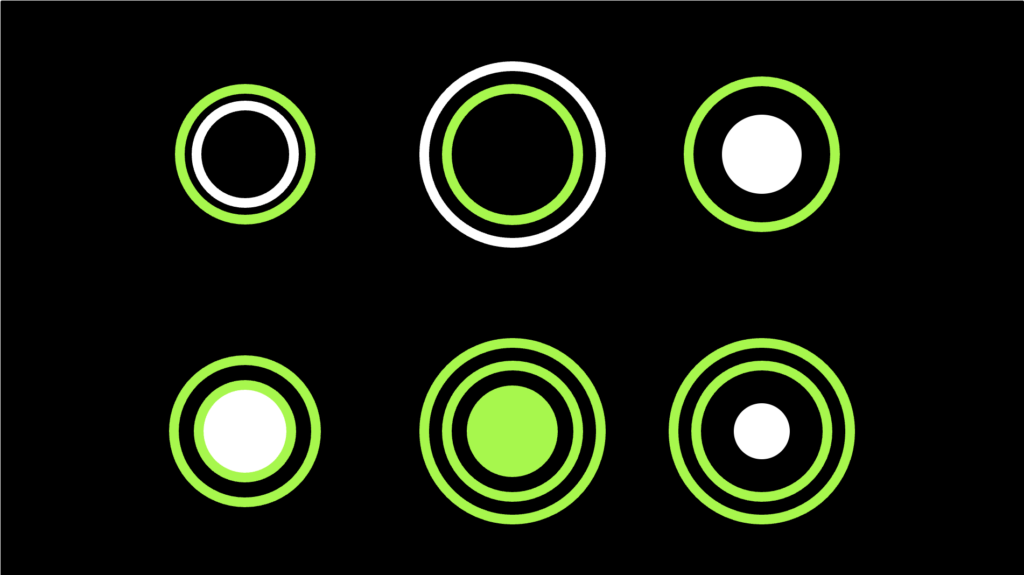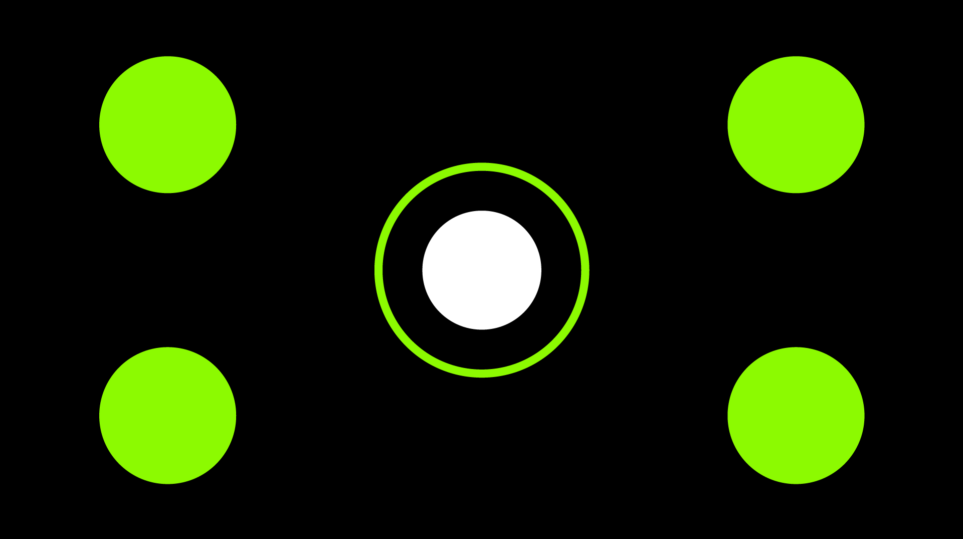Consistency
Consistency is king. Because the brain is lazy.

Is marketing a playground for creativity? Many companies treat marketing and branding as separate entities. Strict specifications apply to the corporate identity. Marketing, on the other hand,
is allowed to pretty much create whatever it wants. And consistency is considered a limitation for creativity. Really?
Brand exposure
I have two scary facts for you. Fact number one: Before you finish your breakfast, you probably have been exposed to more than 100 brands. It starts in the bedroom, continues in the bathroom and in the kitchen to the breakfast table. You might not notice these brands actively, but they all fight for your attention – because they want something from you: they want you to purchase them again in the future. Instant brand recognition is key for their success.
Fact number two: Ever year, around 17 million trademarks are newly registered worldwide. This huge number of new brands shows how important brands are for the communication of increasingly complicated products and services. And here a scary question arises: How can a B2B brand become and remain trusted and at the same time top of mind in this fierce competition for attention? Is it by re-designing the brand as often as possible? Or are trust and attention built through consistency in strategy and design?
Differentiation matters
When you look out for strong brands, you will discover that truly differentiating brands use unique images, a differentiating color scheme, memorable key messages, and varying content. The unique appearance is a great opportunity for you: by consistently implementing differentiating, defined branding elements, you can build recognition and trust on the fast track – even in marketing.
I have been asked to write about how consistency builds brand value. The 100 most valuable brands of the world are currently worth between 5 and 440 billion CHF. A considerable part of this value has been created by consistently building strong, reliable and recognized brands.
Brain matters
To find out, what you can do for your own valuable brand asset, I would like to use the time with you to take look into the neurological processes that are behind building trust into a brand: scientific insights on how brand perception and brand preference are created. And to understand this, we will take a little journey into the brain.
We learn through repetition, repetition, repetition
Strong brands consequently use the way our brain works. Neuroscience has interesting insights on this.
Insight Number 1: We learn through repetition. Links in the brain are built through repetition and consistency. Frequently used neural pathways become stronger, the ones which are not used frequently degrade. This is how a brand is remembered, and linked to a certain image.
What you can do: frequently repeat your key visuals and key messages, to build recognition through repetition, like a refrain in a song. It’s not about copy-paste, but intelligent repetition, and variations within a defined corridor.
Emotions deepen the link
Insight number 2: Emotions deepen the link. For the brain, emotionally charged facts are easier to process, remember and store in the long-term memory. We remember funny or dramatic moments much better than pure information. Some brands use the fun factor – however in healthcare or finance this might be dangerous and inappropriate. In these industries, exciting discovery, empowerment or hero storylines are more appropriate.
So, here is what you can do: go beyond facts and information with your messaging. Put customer benefits at the center of your message. Develop engaging, dramatic stories that show how your brand contributes to finding a path into the future.
The brain is lazy
Erkenntnis Nummer 3: Das Gehirn ist grundsätzlich faul. Denn jede Form von geistiger Arbeit kostet das Gehirn viel Energie. Starke Marken sorgen für «kortikale Entlastung» – sprich, sie nehmen dem Gehirn Arbeit ab. Diese Marken hat das Gehirn bereits gelernt, dank konsequenter Kommunikation und Gestaltung, und sie werden sofort mit den beabsichtigten Eigenschaften assoziiert. Die kortikale Entlastung unterstützt die Kaufentscheidung, indem sie die Intuition entscheiden lässt. Du fragst Dich jetzt vielleicht: Spielt Intuition beim Kauf von Geräten für Millionen von Schweizer Franken wirklich eine Rolle? Geht es in B2B nicht einfach um Preis und Leistung?
Nun, beides stimmt. Preis, Verfügbarkeit und Leistung spielen eine Rolle. Aber am Ende trifft ein Mensch die Kaufentscheidung. Und Menschen nutzen nicht nur das rationale, langsame Denken, sondern beziehen auch das intuitive «schnelle Denken» in ihre Entscheidung mit ein. Sie fragen sich: Kenne ich diese Marke? Vertraue ich dieser Marke – intuitiv?
Was Du nun tun kannst: Setze Deine Marke mit den definierten Elementen konsequent um, um die Wiedererkennung Deiner Marke zu steigern, das Gehirn Deiner Kunden zu entlasten und Vertrauen aufzubauen.
The three things every communicator can do, to drive on-brand implementation
-
Frequently repeat your key visuals and key messages to build recognition through repetition.
-
Put customer benefits at the center of your message.
-
Consistently implement the brand with the defined elements to provide cortical relief.
Rebranding or not?
To close the story, I’d like to share something personal with you. This whole text in fact, is against our own business interest. We are a branding agency and we would love to evolve and change brand experiences much more frequently. It would be really nice for our business. But we also know: strong brands have been built carefully to reach their enormous value, and consistency is one very relevant ingredient to further strengthen it.











